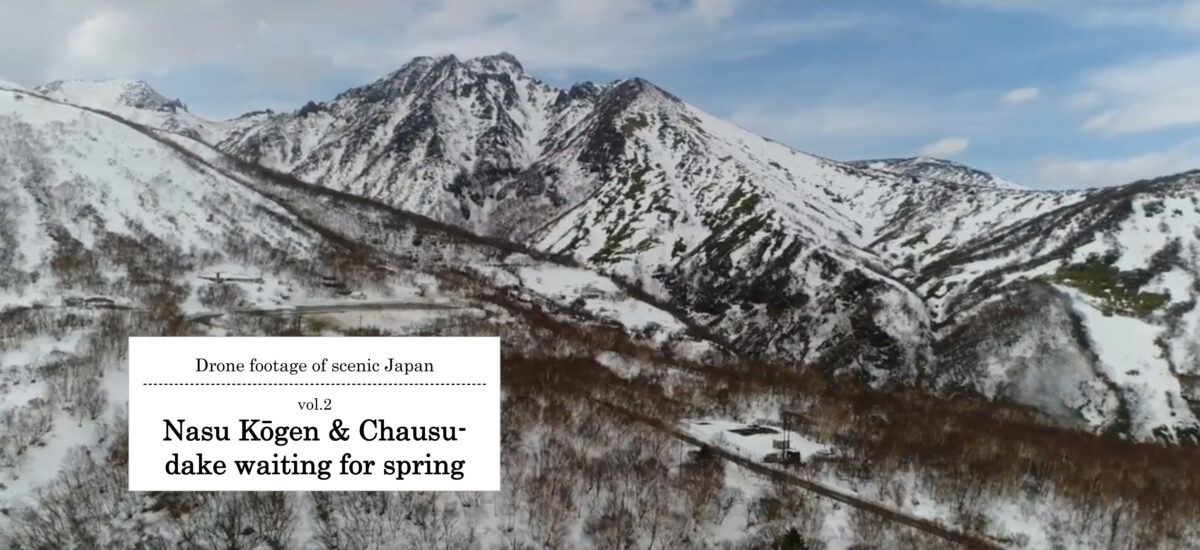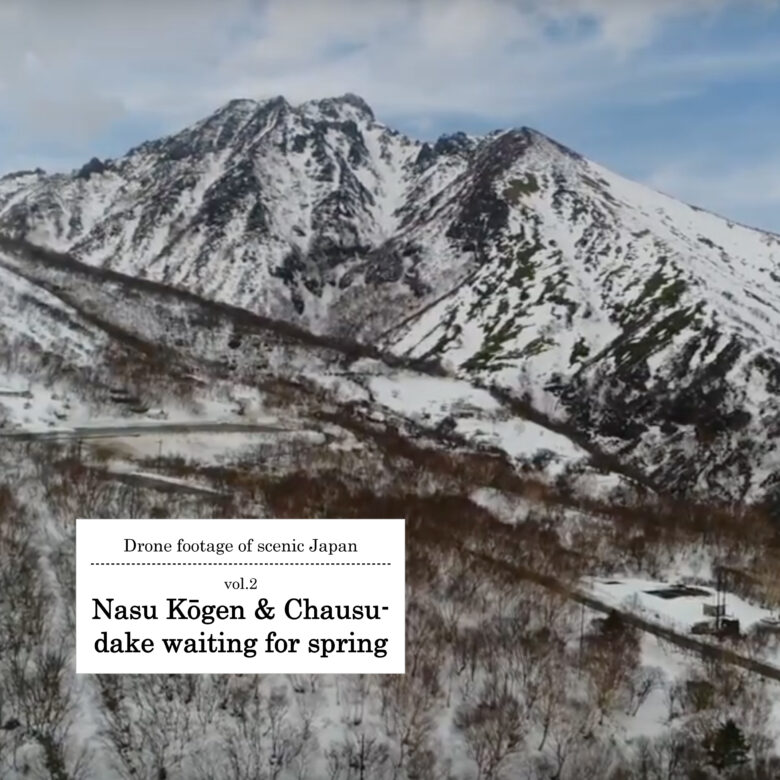

Bringing you bird’s-eye view aerial footage of scenic landscapes all over Japan. This time we look down on Nasu Kōgen Highland and Chausu-Dake Peak in Nikkō National Park.
Text : Yūji Fujinuma / Music : 水城雄 Yu Mizuki / English Version : Judy Evans
Keyword : Nikko National Park / Drone Footage / Chausu-Dake / Nasu Kōgen
Chausu-Dake Peak and the Nasu Mountain Range Overlooking Nasu Kōgen Highland
Footage of the Nasu mountain range and Nasu Kōgen highlands from the base station of the Nasu Ropeway. The drone ascends 120 metres above the snow-covered ground then spins around to capture footage of Chausu-dake Peak and the Nasu mountain range, with Nasu Kōgen visible below. The snow covering is beginning to melt and shoots of alpine plants are peeping through. Spring, with its fresh green leaves, is just around the corner.
(Filmed in early spring – 24 March)
Nasu Kōgen Highland and Chausu-dake Peak
The Nasu mountain range in the north of Nikkō National Park comprises a cluster of five volcanoes known as ‘The Five Peaks of Nasu’, with Chausu-dake Peak (1,915 m) the highest of the five. Chausu-dake Peak is also the youngest of the five peaks, with two craters at the top of the mountain, known as the ‘Infinite Hell’, still continuing to emit hydrogen sulfide and sulphur dioxide gas. Eruptions from Chausu-dake are frequently mentioned in historical records, with the most recent being in July 1881.
The volcanic ash layer covering the Nasu Kōgen highlands at the south-eastern base of the peak rendered the land unfit for cultivation and the area remained as wilderness for a long time. The highlands began to be developed during the Meiji Period (1868 – 1912), when a large-scale aqueduct was constructed and dairy farming and cool highland agriculture took place. The area was also developed as a highland resort, taking advantage of the abundant hot springs all around the base of the mountains, so that people could get close to nature throughout the seasons.
Being a mountainous area, the winters are naturally cold. An icy wind that constantly blows down off the peaks makes for a harsh life for those who live beneath the mountains. The snow is late to melt here; sometimes not until mid-May. But as soon as there is a hint of warmth at the base of the mountains, the flower buds on the still snow-covered plants begin to swell in preparation for blooming. When the snow does finally disappear, the highlands are covered with the colourful blooms of wild rhododendrons and azaleas and the skies fill with birdsong. As the days get warmer, the greenery of the mountain tops is restored and the harsh bleakness of winter is replaced by a multi-coloured profusion of alpine plants.








